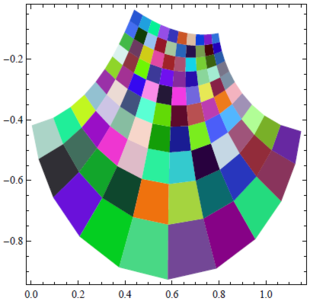Welcome to Math 240!
(additions to this web site no longer count towards good deed points)
|
| #
|
Week of...
|
Notes and Links
|
| 1
|
Sep 8
|
About This Class, What is this class about? (PDF, HTML), Monday, Wednesday
|
| 2
|
Sep 15
|
HW1, Monday, Wednesday, TheComplexField.pdf,HW1_solutions.pdf
|
| 3
|
Sep 22
|
HW2, Class Photo, Monday, Wednesday, HW2_solutions.pdf
|
| 4
|
Sep 29
|
HW3, Wednesday, Tutorial, HW3_solutions.pdf
|
| 5
|
Oct 6
|
HW4, Monday, Wednesday, Tutorial, HW4_solutions.pdf
|
| 6
|
Oct 13
|
No Monday class (Thanksgiving), Wednesday, Tutorial
|
| 7
|
Oct 20
|
HW5, Term Test at tutorials on Tuesday, Wednesday
|
| 8
|
Oct 27
|
HW6, Monday, Why LinAlg?, Wednesday, Tutorial
|
| 9
|
Nov 3
|
Monday is the last day to drop this class, HW7, Monday, Wednesday, Tutorial
|
| 10
|
Nov 10
|
HW8, Monday, Tutorial
|
| 11
|
Nov 17
|
Monday-Tuesday is UofT November break
|
| 12
|
Nov 24
|
HW9
|
| 13
|
Dec 1
|
Wednesday is a "makeup Monday"! End-of-Course Schedule, Tutorial
|
| F
|
Dec 8
|
The Final Exam
|
| Register of Good Deeds
|

Add your name / see who's in!
|

|
|
Boris
Subtle Errors in Proofs
Check out these proofs:
Proof 1
Let  ,
,  be subspaces of a vector space
be subspaces of a vector space  .
.
We show that  is a subspace
is a subspace  .
.
- Assume that
 is a subspace.
is a subspace.
- Let
 ,
,  .
.
- Then
 .
.
- Then
 .
.
- Then
 .
.
- Case 1:
 :
:
- Since
 and
and  has additive inverses, then
has additive inverses, then  .
.
- Then
 .
.
- Case 2:
 :
:
- Since
 and
and  has additive inverses, then
has additive inverses, then  .
.
- Then
 .
.
- Then
 .
.
- Then
 . Q.E.D.
. Q.E.D.
Proof 2
Let  . Then
. Then  , define
, define
 and
and  .
.
We show that  is not a vector space over
is not a vector space over  .
.
- We show that
 is not commutative.
is not commutative.
- Let
 .
.
- Then
 .
.
- Then
 is not commutative.
is not commutative.
- Then
 is not a vector space. Q.E.D.
is not a vector space. Q.E.D.
Can you spot the subtle error in each?
In Proof 1, the equivalence of (2) the last line and (1) the "let" statement to the second last line is not obvious:
(1) Let  . [Many lines] Then
. [Many lines] Then  .
.
(2) Then  .
.
Rewrite sentences (1) and (2) into a form that is easier to compare:
(1)  .
.
(2)  .
.
For Proof 1 to be correct, we must show that sentences (1) and (2) are equivalent. Alternatively, alter the structure of Proof 1 into a proof by contradiction or into proof in which you assume that one of the conditions in the disjunction is satisfied.
In Proof 2, the only thing that is shown is that  is not the additive identity. For Proof 2 to be correct, either plug in a vector that is not
is not the additive identity. For Proof 2 to be correct, either plug in a vector that is not  or show that
or show that  is the additive identity by some other means, which introduces a contradiction.
is the additive identity by some other means, which introduces a contradiction.
Nikita






























